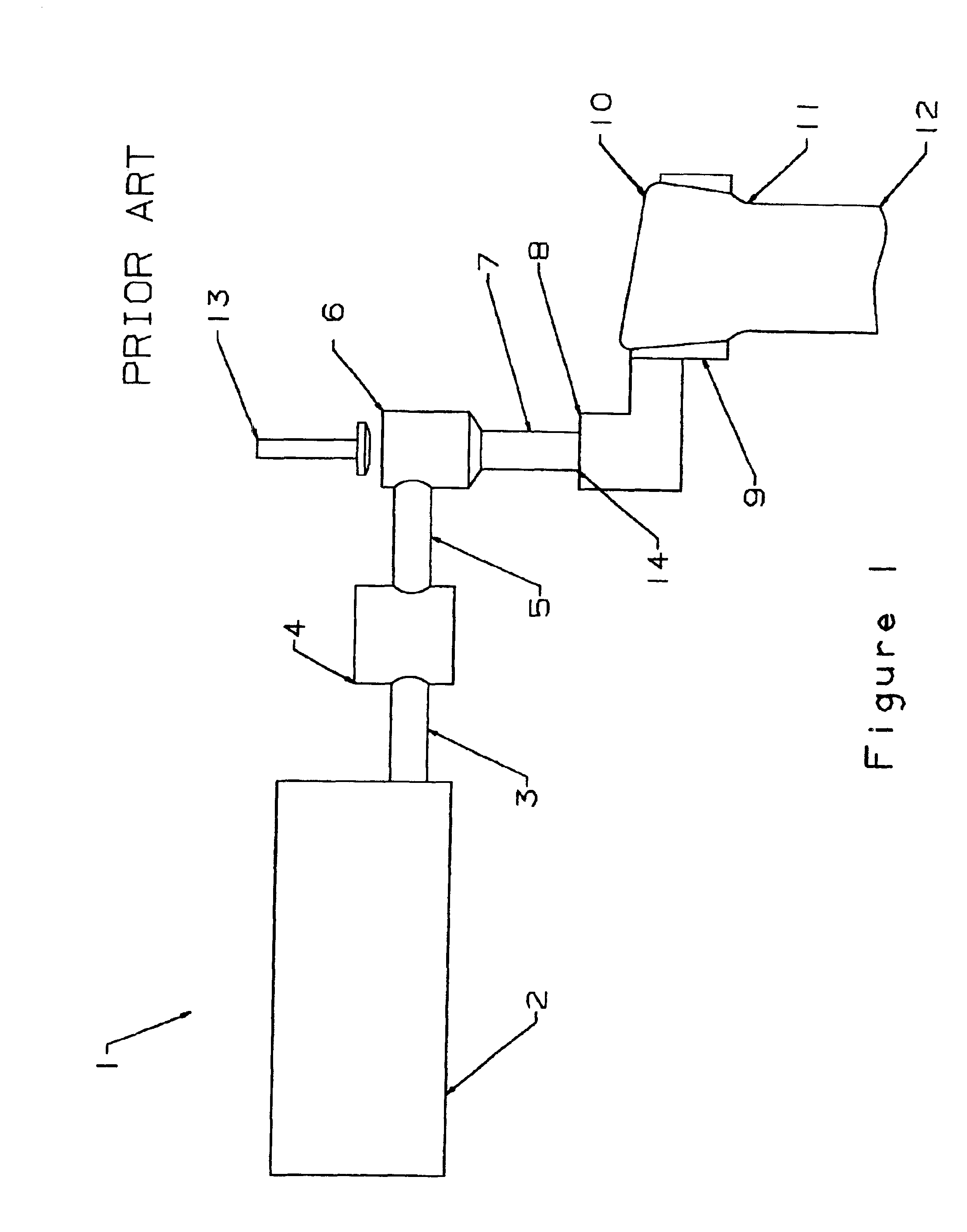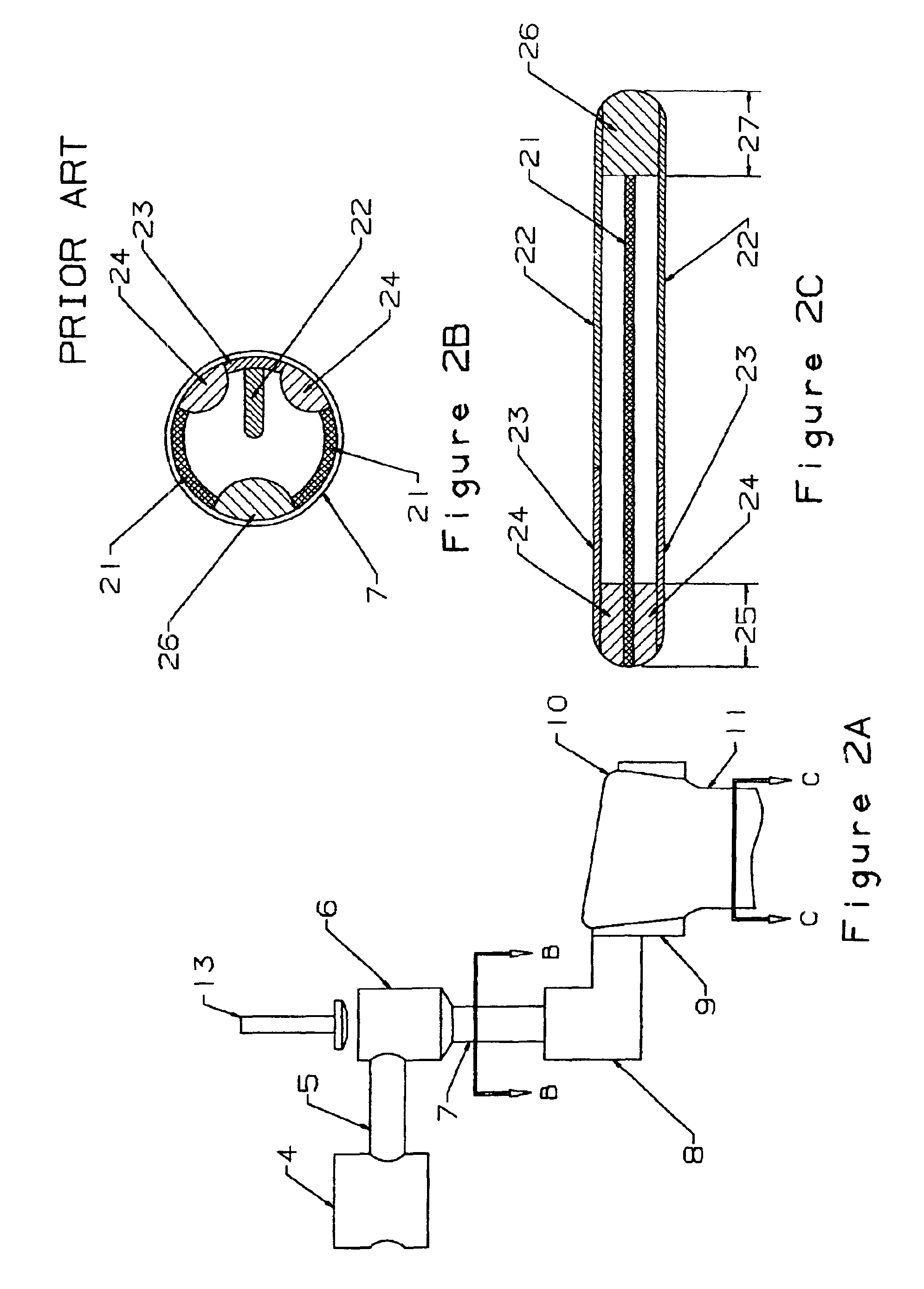Overflow downdrawn glass forming method and apparatus
a technology of glass forming and overflow, applied in the field of glass sheet manufacturing, can solve the problems of limited apparatus, slow recovery from transient conditions, and subject to lower quality, and achieve the effect of minimizing air leakage in the apparatus
- Summary
- Abstract
- Description
- Claims
- Application Information
AI Technical Summary
Benefits of technology
Problems solved by technology
Method used
Image
Examples
Embodiment Construction
[0130]The flow dynamics of this invention are such that the outside surfaces of the glass sheet are formed from thoroughly mixed virgin glass that comes from the center of the glass stream flowing into the forming apparatus and thus has not contacted a refractory or refractory metal surface. This produces the highest possible surface quality. This pristine surface is essential for the manufacture of LCD / TFT semiconductor display devices. In addition, the flow dynamics in all embodiments of this invention are such that the flow rate of molten glass to the forming wedge at the bottom of the forming trough is substantially uniform over its width.
[0131]Referring to FIGS. 1, 11A and 11B, a typical “Overflow Process” manufacturing system (1) is shown. The glass (10) from the melting furnace (2) and forehearth (3), which must be of substantially uniform temperature and chemical composition, feeds a stirring device (4). The stirring device (4) thoroughly homogenizes the glass. The glass (10...
PUM
| Property | Measurement | Unit |
|---|---|---|
| angle | aaaaa | aaaaa |
| angle | aaaaa | aaaaa |
| angle | aaaaa | aaaaa |
Abstract
Description
Claims
Application Information
 Login to View More
Login to View More - R&D
- Intellectual Property
- Life Sciences
- Materials
- Tech Scout
- Unparalleled Data Quality
- Higher Quality Content
- 60% Fewer Hallucinations
Browse by: Latest US Patents, China's latest patents, Technical Efficacy Thesaurus, Application Domain, Technology Topic, Popular Technical Reports.
© 2025 PatSnap. All rights reserved.Legal|Privacy policy|Modern Slavery Act Transparency Statement|Sitemap|About US| Contact US: help@patsnap.com



